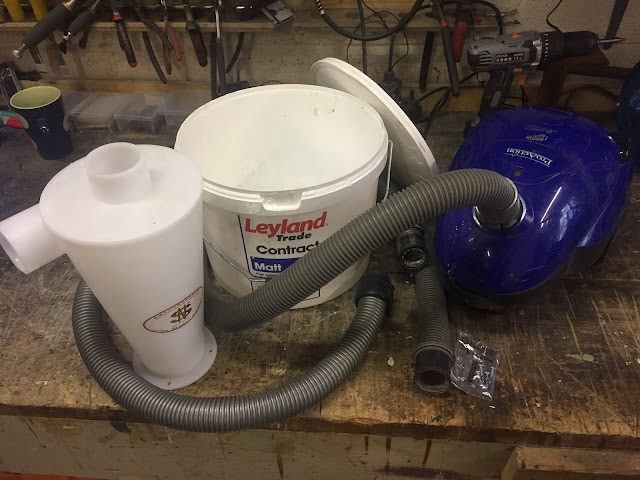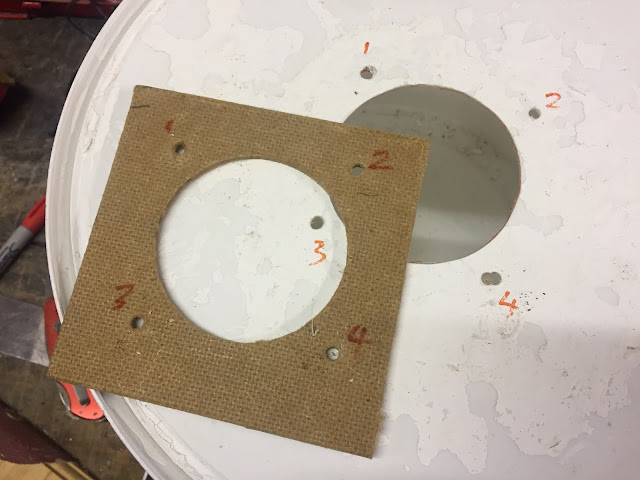Before throwing myself back into anything substantial, I reasoned that it was high time to take stock and make a few upgrades to my ailing equipment. I want to ensure that workflows are optimised, so that I am not demotivated by ramshackle set-ups. Time invested now is time saved in the future...
Top of my hit list was to get the blast cabinet back in operation, but with improved dust extraction, lighting and longer work-cycle times. Previously I had daisy-chained two small compressors together, but not long ago one of those compressors gave up the ghost, so that left me with just one underpowered unit with a tiny 25ltr tank. The solution to this was simple; I invested in the largest compressor that I could afford which could run off of the standard UK plug (I don't have 3-phase power in the garage). Introducing this behemoth;
SGS 100ltr Direct Drive Air Compressor (14.6CFM, 3hp). Should serve me well! NB: I salvaged the 25ltr tank of the old broken unit and I may repurpose this in the future to serve as an expansion, or 'pig' reservior tank.
Next up was to consider dust management, which has been a perennial problem that I have never found an adequate solution for. Fortunately, times have moved on and many hobbyists were championing the use of Cyclone Dust Sepatators. Using a regular household vacuum cleaner, my plan is to suck out the cloud of dust from the cabinet and keep visibility clear when blasting. Having the separator positioned between the cabinet and the vacuum cleaner would stop the dust clogging it up and deposit it into a bucket ready for convenient disposal. I am riding on the coattails of many others here and I pinched ideas about how to go about this from various online sources. Nothing original, but here are a sequence of pics which detail the assembly of my apparatus;
My cyclone separator didn't come with a gasket, so I custom cut one out of 2mm SBR rubber sheet;
To reinforce the underside of the lid, I used an offcut of hardboard and cut the necessary holes;
Secured everything together with 20mm M4 pan head machine screws and nylocs;
I purchased some hose adapters from an eBay seller who produces purpose-made 3D printed items from PLA (a plant based thermoplastic polymer). These particular ones fit the 50mm ID of the cyclone and reduce down to 32mm ID to accommodate a regular vacuum hose. They fit like a glove and it saved me a headache of trying to conjure up something from scratch;
Here is the basic unit completely assembled and plumbed up;
I gave it a test run on some saw dust and the results were encouraging:
As well as primarily serving as a cabinet dust extractor, I am confident this will also double as a means of quickly repurposing spent grit when blasting bigger items over a tarpalin. So, the next phase of the plan is to find a way to connect the hose to cabinet. Unfortunately, my cabinet doesn't have an outlet coupler, so I may have to fabricate something usable...
















No comments:
Post a Comment